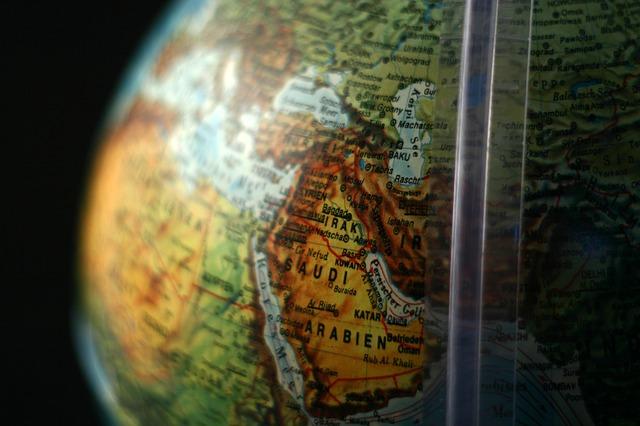
Across the Middle East there has been a marked increase in terrorist attacks in the wake of the Arab Spring, the rise of the Islamic State (IS), and the revival of al-Qaeda and its offshoots. Beyond Iraq and Syria, IS has established regional affiliates elsewhere in the Middle East—including in Egypt, Kuwait and Saudi Arabia—that have reignited terrorist activity in those countries after years of relative quiet. Following years of waning influence, al-Qaeda has also regained some traction, aided by the continuing conflicts in Syria, Iraq and Yemen. Here I have outlined the key CT developments in 2016 by country.
Egypt: A consolidated military rule under Abdel Fattah al-Sisi and the passage of a restrictive new CT law haven’t diminished the terrorist threat in Egypt. In fact, 2016 was a particularly violent year, the country experiencing its highest level of terrorism since the late 1990s. Various terrorist actors targeted security forces, government officials and minorities. The year ended with two bomb attacks; one targeted security forces in Giza, killing government personnel; the other targeted the Coptic Botroseya Church in Cairo killing 26 worshippers. It was the deadliest terrorist attack on Egypt’s Christian minority since the 2011 New Year’s Eve bombing of the Two Saints church in Alexandria.
Jordan: Jordan’s CT and intelligence agencies are widely seen as being among the most capable in the region but they experienced a number of setbacks in 2016. In June, Jordanian security installations were compromised on two separate occasions: a lone attacker shot and killed five officers at a General Intelligence Division building before escaping, while a car bomb at a military base on the Syrian border killed six soldiers. An exodus of Jordanian fighters to Syria (estimated at over 2,500) was also a key concern for Jordanian authorities.
Kuwait: During 2016, Kuwait continued to build its CT capabilities, although the Kuwaiti government lacks a clear legal framework for prosecuting terrorism crimes. It’s also a cooperative partner in international and regional CT efforts, including its membership of the Small Group of the Global Coalition to Counter IS. In a joint operation with Indian security services in 2016, a Kuwaiti citizen was arrested and charged with making arrangements to fund the trip of the first group of Indian IS recruits to Syria. That action spurred broader investigations of terrorist financing networks in Pakistan and Afghanistan paying for IS foreign fighters’ travel to Syria.
Saudi Arabia: The kingdom of Saudi Arabia has long been a target and an incubator of terrorism. It’s rightly viewed as both ‘the arsonist and the firefighter’. The kingdom is also a source of terrorism financing and has actively exported its brand of extreme Wahhabi Islam. In 2016, the country experienced five major terrorist attacks, resulting in 44 people being killed. Aside from this, the kingdom did take significant steps to stifle other terrorist funding in 2016. In March, it took joint action with the US to disrupt the fundraising networks of a number of terrorist groups by blocking money transfers and imposing sanctions on networks across the region.
Yemen: In 2016 Yemen remained beset by conflict, and was rarely controlled by a single power. AQAP is based in Yemen and is al-Qaeda’s most capable affiliate. AQAP has a long-established presence in Yemen, but the most recent civil war has been a boon to the group. With no decisive victor in Yemen’s civil war and a situation exacerbated by the Gulf Arab states and Iran playing out their regional conflict by proxy, Yemen will remain divided and politically unstable, providing fertile ground for AQAP and IS for the foreseeable future.
Looking ahead, substantial changes in the region in 2017 are unlikely. IS will remain a significant terrorism threat, and al-Qaeda will continue to play the long game, exploiting tactical openings to consolidate its presence in the region. Competition between IS and al-Qaeda is likely to intensify in 2017 as IS transforms into a more traditional terrorist organisation. Both groups will compete for recruits and ideological leadership within the movement.
The underlying regional conflict between Saudi Arabia and Iran and its proxies will continue to play out in 2017. There appears to be no significant prospect for political reform in this year.
Middle Eastern governments have historically played a cat-and-mouse game with violent Islamist extremist groups, alternately tolerating and cracking down on them. However, the rise of IS has demonstrated how tolerance of such groups can turn and destabilise the region. State tolerance of terrorist groups and terrorist financing continues, however, as Iran, Saudi Arabia and other Gulf states are still using proxy groups to promote their own interests. Middle Eastern CT strategies and policies remain entangled to various degrees with those of the West, particularly the US led Coalition to defeat the Islamic State.